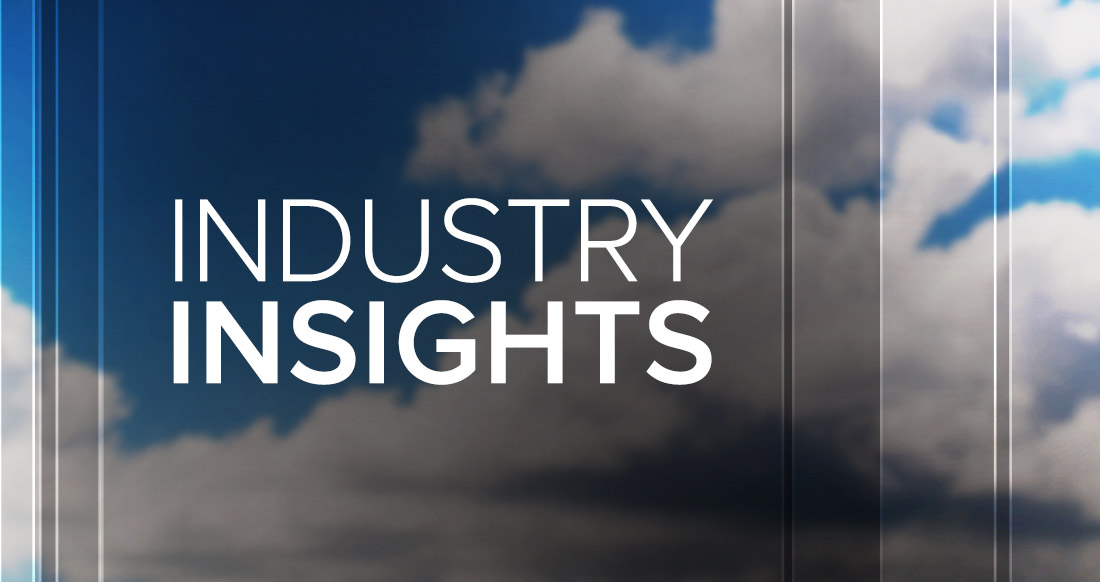Industry Insights: How technology is driving weather coverage on TV

Subscribe to NCS for the latest news, project case studies and product announcements in broadcast technology, creative design and engineering delivered to your inbox.
What is on the horizon for weather in broadcast? 4k? Refinement of mapping?
“The next 10 years will be very interesting for weather in broadcast… The explosion of weather data will continue. Social media and digital content distribution will continue to grow and provide pressure on traditional OTA broadcasts. Climate change will continue to be an ongoing story. The internet of things (IoT) and artificial intelligence utilized in decision making will become a larger part of everyday life. These factors will require weather broadcasters to not only have technology that solve ‘brick and mortar’ issues like 4k, but also solve issues surrounding big data and content distribution,” said Boss.
“Maintaining the audience loyalty comes from proving over and over that one is staying relevant to the audience’s everyday activities and focus, and also to show that new technology is adopted to help enhance the storytelling. For broadcasters and the focus on weather content and weather broadcasting, the main competition is not from other broadcasters, the main risk is not to lose relevance with the viewer versus the content presented, it is to make a difference from the information that can be obtained by the touch of a smartphone or tablet,” said Eggestad.
“Weather broadcasters must pull on the primary assets that are available to them and not to the weather apps available ‘everywhere,’ and those are (1) the broadcast weather personalities and their expertise, and (2) the ability to not only explain what the weather is going to be, but why that is so, and why it matters. If the weather programming on air only shows a 5-day forecast and does not explain the meteorology behind it, the audience will find the same or better information on an app in a second, and the battle is lost. However, if the weather programming allows the weather personality to step into the role of the expert, the craftsman and the public educator, the broadcaster will not only win the audience loyalty, but also serve the public with invaluable insight,” added Eggestad.
“The level of detail you can see with a 4K image is amazing and provides further opportunities for the broadcaster to showcase the best in weather technology. New super-high resolution weather data is increasingly coming available; such as data from the National Weather Service radar network and the new GOES-16 (GOES-R) satellite,” said Mougey. “The release of ATSC 3.0 to addressable TV’s or smart TV’s will also expand upon very localized alerting enable the TV to ‘wake up’ during severe weather events and impact vital storm detail and drive viewers to weather broadcasts.”
“ATSC 3.0 will also open up new business models for broadcasters, who will be able to offer highly targeted local ad insertion into the stream, and provide other niche and personalized content to any device. The new standards will also help save lives by allowing much more targeted alerts of severe weather, avoiding the ‘over-warning’ pitfall that can mean a loss of confidence in warnings by the public,” notes Dow.
“We will continue to see advancements in hyper-local and precision weather technology that will aid broadcasters in their mission to keep the public safe,” added Mougey.
Stay tuned for our next weather Industry Insights roundtable early next week, where our panelists will dive deeper into smart workflows for broadcast meteorologists, augmented reality and the current weather solutions available on the market.
Participants
Bill Boss – AccuWeather
Karl Eggestad – ChyronHego
Mike Mougey – Baron
Bill Dow – The Weather Company
[focus-on]This article is part of our Focus On Weather. View more from the series here.[/focus-on]
Subscribe to NCS for the latest news, project case studies and product announcements in broadcast technology, creative design and engineering delivered to your inbox.




tags
AccuWeather, Baron, Baron Lynx, Bill Boss, Bill Dow, ChyronHego, Karl Eggestad, Metacast, Mike Mougey, The Weather Company
categories
Heroes, TV News Weather Graphics, TV News Weather Graphics Systems, Weather